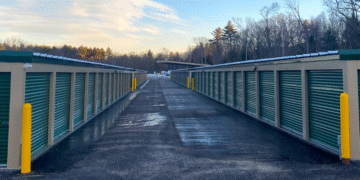Stuck pipe incidents in oil and gas operations can lead to costly downtime, wasted resources, and operational challenges. Pipe recovery is crucial for restoring well functionality and maintaining safe operations. Partnering with specialized companies like Renegade Wireline Services can provide advanced solutions and expert assistance. This expertise not only resolves stuck pipe events efficiently but also helps operators implement preventive approaches to enhance well integrity and minimize risks. The main causes of stuck pipes, detection strategies, recovery techniques, and best practices are discussed.
Common Causes of Stuck Pipe
Understanding why pipes become stuck is vital for both reactive recovery and proactive prevention. The most prevalent causes include:
Differential Sticking
Differential sticking occurs when the drill string or pipe becomes pressed tightly against a permeable formation due to pressure differences. This pressure differential creates an adhesive force between the pipe and the formation wall, making movement extremely difficult even with significant force or rotation.
Mechanical Sticking
Mechanical sticking results from physical obstructions within the wellbore, such as key seating, where the drill pipe lodges in a groove or ledge. Bridge formation from collapsed boreholes, cuttings build-up, or debris can also restrict movement, immobilizing the pipe downhole.
Wellbore Instability
Instabilities such as hole collapse, shale sloughing, or enlarged boreholes often lead to the accumulation of loose materials. Cuttings and cavings can form a barrier around the pipe, effectively trapping it in place and usually complicating recovery efforts further.
Detection and Assessment
The first critical step in recovery is accurate detection of the stuck point. Specialized tools provide timely and precise assessments to inform the recovery strategy.
- Free Point Indicator (FPI): This device measures pipe stretch and torque to pinpoint where the pipe transitions from free to stuck, allowing operators to target interventions effectively.
- Stuck Pipe Log: Sonic measurements via logging tools help evaluate the condition of the pipe in situ, distinguishing between sections that are immobilized and those that remain moveable.
Technologies for wellbore diagnostics have evolved, improving speed and accuracy in stuck pipe evaluation. Additional documentation from the U.S. Department of Energy further highlights the importance of advanced downhole monitoring tools for robust pipe recovery planning.
Pipe Recovery Techniques
Once the stuck point is confirmed, operators can employ a range of recovery methods tailored to site-specific circumstances. The choice of technique depends on the well configuration, the nature of the stuck pipe, and safety protocols.
- Back-Off Operations: By applying left-hand torque at a predetermined joint above the stuck point, the pipe can be unscrewed and removed, often with minimal disruption to the remaining well structure.
- Chemical Cutters: These tools introduce reactive chemicals that provide a clean pipe cut without explosives—an ideal solution for fields with sensitive infrastructure or regulatory constraints.
- Mechanical Cutters: Suited to various environments, mechanical cutters provide a non-explosive, low-impact cutting method for separating stuck intervals from the free pipe.
- Radial Cutting Torch (RCT): Using a plasma-generating reaction, this non-explosive system creates a precise, full-circumference cut in the pipe, enabling safe retrieval even through tough steel and alloy tubulars.
Preventive Measures
Proactive measures are the most effective way to minimize the frequency and severity of stuck pipe incidents. A combination of technical planning and operational vigilance is essential to maintaining consistent, well-performed.
- Well Planning and Design: Carefully engineered well trajectories, thoughtful casing selection, and optimal drilling fluid formulations greatly reduce the risk of both differential and mechanical sticking.
- Real-Time Monitoring: Continuous monitoring of drilling parameters using downhole tools and surface sensors enables early detection of pressure anomalies, changes in torque, and signs of pipe sticking.
- Proper Drilling Practices: Adhering to best practices, such as maintaining clean drilling fluid, avoiding excessive weight on the bit, and rotating the pipe regularly, helps avert obstruction and sticking.
- Contingency Planning: Having a defined protocol in place, with rapid access to specialized pipe recovery tools and experienced personnel, ensures that any stuck pipe event is managed swiftly and efficiently.
Conclusion
Pipe recovery is a complex but essential aspect of oil and gas well operations. By recognizing early warning signs, leveraging modern diagnostic tools, and responding with the appropriate recovery techniques, operators can keep wells productive and safe. Industry leaders offer a critical edge, supporting efficient recovery and contributing to industry best practices for well reliability and operational excellence.










